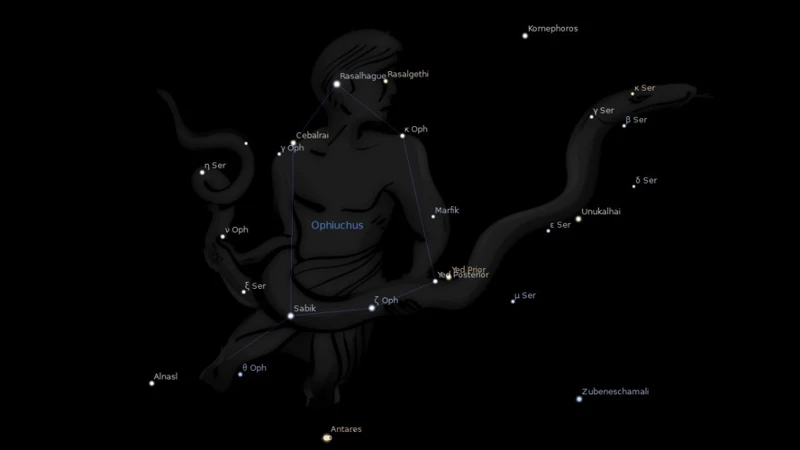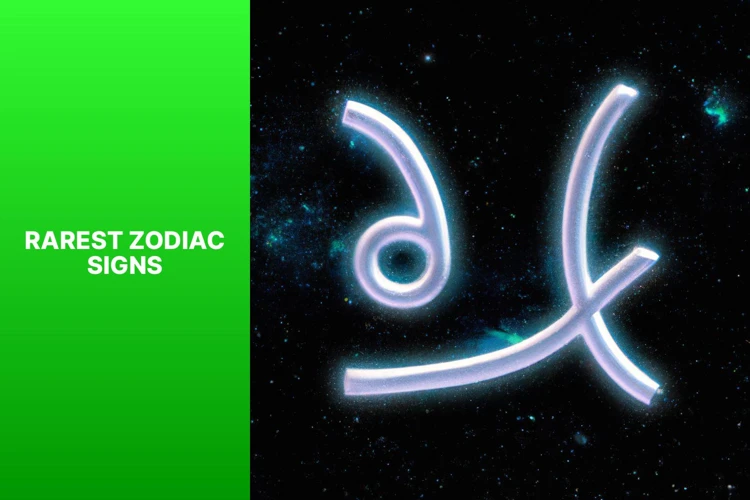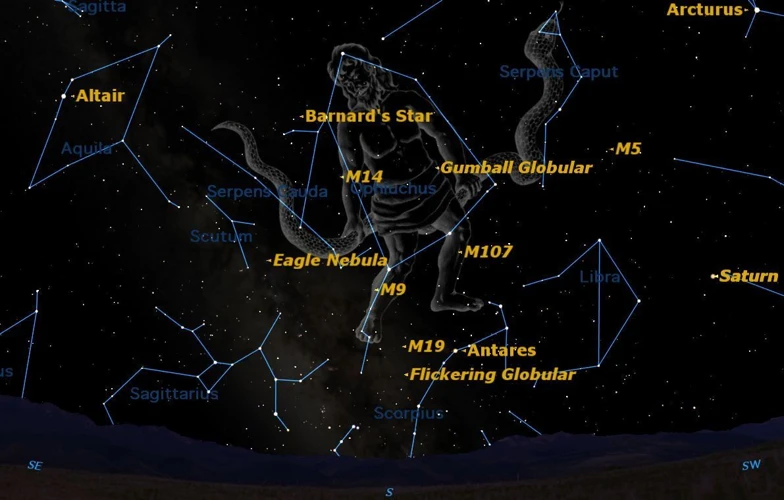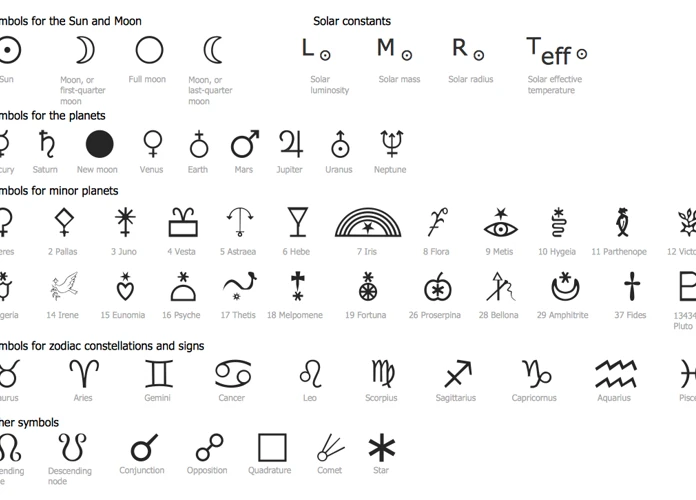Have you ever wondered about the connection between planetary symbols and zodiac signs? In the world of astrology, these symbols hold significant meaning and play a crucial role in understanding our individual personalities and life paths. Ancient civilizations devised these symbols as a way to represent the various planets and their unique energies. Over time, they became deeply intertwined with astrology and the study of the zodiac signs. In this comprehensive article, we will dive into the origins of planetary symbols, their symbolic representations, and how they relate to the twelve zodiac signs. So, get ready to uncover the hidden connections and gain a deeper understanding of the fascinating world of astrology.
Contents
- The Significance of Planetary Symbols
- The Zodiac Signs: A Brief Overview
- Deciphering the Relationship
- Examples from Astrology
- Conclusion
-
Frequently Asked Questions
- 1. What are planetary symbols?
- 2. How were planetary symbols created?
- 3. Do planetary symbols have any connection to constellations?
- 4. Can planetary symbols be found in other cultures?
- 5. What is the significance of using symbols in astrology?
- 6. Can I use planetary symbols for personal interpretation?
- 7. Are there any resources to learn more about planetary symbols?
- 8. Can planetary symbols change over time?
- 9. How can planetary symbols enhance my understanding of astrology?
- 10. Can understanding planetary symbols improve my relationships?
- References
-
Frequently Asked Questions
- FAQ 1: What are planetary symbols in astrology?
- FAQ 2: Where do planetary symbols originate from?
- FAQ 3: What is the significance of planetary symbols?
- FAQ 4: How are planetary symbols used in astrology?
- FAQ 5: What is the relationship between planetary symbols and zodiac signs?
- FAQ 6: How does planetary rulership work in astrology?
- FAQ 7: Which zodiac signs are ruled by Mercury?
- FAQ 8: What zodiac signs are associated with Venus?
- FAQ 9: Which zodiac signs are governed by Mars?
- FAQ 10: How can understanding planetary symbols and zodiac signs benefit individuals?
- References
- Read More
The Significance of Planetary Symbols

The significance of planetary symbols lies in their rich history and their ability to convey complex celestial concepts in a concise and visual manner. 1. Ancient Origins of Planetary Symbols: These symbols have their roots in ancient civilizations, such as Mesopotamia and Egypt, where they were used to represent the gods associated with the planets. 2. Symbolic Representations: Each planetary symbol carries deep symbolic meaning, often depicting elements of the planets’ physical attributes or mythological associations. For example, the symbol for Venus resembles a hand mirror, representing beauty and femininity. 3. Planetary Symbols in Astrology: In astrology, these symbols are essential for understanding the influences and energies of the planets as they interact with our zodiac signs, houses, and aspects. They help astrologers interpret birth charts and provide insights into an individual’s personality and life path. So, whether you’re an astrology enthusiast or simply curious about the mystical world of the stars and planets, exploring the significance of planetary symbols is a fascinating journey that offers a deeper understanding of the cosmos and our place within it.
1. Ancient Origins of Planetary Symbols
The ancient origins of planetary symbols trace back to the early civilizations that observed the celestial bodies and their movements. These symbols were created as a way to represent the gods associated with each planet and to express their unique qualities. Here are some fascinating insights into the origins of planetary symbols:
Mesopotamia: The ancient Mesopotamians, who inhabited the region of present-day Iraq and Kuwait, were among the first to develop a sophisticated understanding of celestial bodies. They assigned specific deities to each planet and created symbols to represent them. For instance, the symbol for Jupiter resembled a stylized lightning bolt, denoting its association with the powerful god Marduk.
Egypt: In ancient Egypt, the planets were highly revered and considered manifestations of various gods and goddesses. The Egyptians attributed specific qualities to each planet and developed symbols to depict them. For example, the symbol for Mars was inspired by the divine falcon and represented the god Horus.
Hellenistic Influence: The Hellenistic period, which followed the conquests of Alexander the Great, marked a significant turning point in the development of astrology and planetary symbolism. Influenced by the teachings of ancient Greek scholars like Ptolemy, astrologers began using new symbols inspired by the initial letter of each planet’s name. For instance, the symbol for Venus was derived from the Greek letter “Λ” (lambda), representing the goddess of love and beauty.
These ancient civilizations laid the foundation for the planetary symbols that continue to be used in astrology today. By understanding the rich history and mythological origins of these symbols, we can delve deeper into the profound connections between the celestial bodies and our own lives. Whether you believe in the metaphysical power of astrology or are simply intrigued by the mysteries of the cosmos, exploring the ancient origins of planetary symbols unveils a captivating world of symbolism and meaning.
2. Symbolic Representations
Symbolic representations play a crucial role in understanding the meaning and essence of planetary symbols in astrology. Each planetary symbol holds its own unique significance and serves as a visual representation of the planet’s energy and qualities. Here are some examples of symbolic representations for select planets:
Sun: The symbol for the Sun represents a circle with a dot at the center. This symbolizes the core of our being and the life-giving energy that the Sun represents.
Moon: The symbol for the Moon resembles the crescent shape, symbolizing the ever-changing nature of emotions and the subconscious mind. The Moon is associated with intuition, nurturing, and feminine energy.
Mercury: The symbol for Mercury combines a circle with a small cross at the bottom, representing intellect, communication, and the ability to adapt and gather information.
Venus: The symbol for Venus resembles a hand mirror, representing beauty, love, harmony, and the feminine principle. It is associated with relationships, aesthetics, and our ability to attract what we desire.
Mars: The symbol for Mars represents a circle with an arrow pointing diagonally upwards to the right. It symbolizes action, aggression, and the driving force behind our desires and ambitions.
Jupiter: The symbol for Jupiter resembles the number four but with a crescent on top. It represents expansion, growth, wisdom, and the ability to seek knowledge and higher understanding.
Saturn: The symbol for Saturn is depicted as a cross or a sickle intersected by a crescent, representing structure, discipline, responsibility, and the lessons we learn through limitations and challenges.
These symbolic representations help astrologers and enthusiasts alike to recognize and interpret the different planetary energies at play within a birth chart or during specific astrological events. Understanding these symbols adds depth and nuance to astrological readings, providing insights into various aspects of life, personality traits, and potential challenges and opportunities. So next time you look at a birth chart or encounter planetary symbols, take a moment to reflect on the rich symbolism behind them and the profound influence they have in the world of astrology.
3. Planetary Symbols in Astrology
In astrology, planetary symbols play a vital role in analyzing and interpreting celestial influences. Each planet is associated with a specific symbol that represents its energy and characteristics. These symbols provide astrologers with a visual shorthand to identify key planetary placements in a birth chart. For example, the symbol for the Sun is a circle with a dot in the center, representing self-expression, vitality, and individuality. Similarly, the crescent moon symbolizes the Moon, representing emotions, intuition, and nurturing. Astrologers examine the placement of these symbols within the houses and zodiac signs of a birth chart to gain insights into an individual’s personality, motivations, and life experiences. The planetary symbols also serve as a way to identify planetary aspects, which are the angles formed between planets and determine their relationship and influence on each other. By understanding the meanings of these symbols, astrologers can provide valuable guidance and predictions based on the complex interplay of planetary energies in an individual’s birth chart. So the next time you encounter these mystical symbols in astrology, remember that they hold the key to unlocking the secrets of the cosmos and provide a deeper understanding of ourselves and the world around us.
The Zodiac Signs: A Brief Overview

The zodiac signs encompass a twelve-fold division of the celestial sphere, representing different personality traits and characteristics associated with a person’s birth date. 1. Definition and Background: The zodiac is derived from the Greek word “zōdiakos,” meaning circle of animals, and is divided into twelve equal parts, known as zodiac signs. These signs are based on the apparent path of the sun across the sky throughout the year. 2. The Twelve Zodiac Signs: Each sign has unique qualities and is associated with specific elements (fire, earth, air, water) and modalities (cardinal, fixed, mutable). From adventurous and fiery Aries to nurturing and sensitive Cancer, to intellectual and adaptable Gemini, every zodiac sign brings its own distinct energy and characteristics to the table. Understanding the zodiac signs provides valuable insights into our own personality traits and compatibility with others, allowing us to navigate relationships and personal growth with greater self-awareness. So, whether you’re new to astrology or a seasoned enthusiast, exploring the zodiac signs offers a fascinating journey of self-discovery and understanding.
1. Definition and Background
In astrology, the Zodiac is divided into twelve distinct signs, each representing different characteristics and qualities. These signs are determined by the position of the celestial bodies at the time of one’s birth. The term ‘zodiac’ comes from the Greek word ‘zōidiakós,’ meaning ‘circle of animals.’ The concept of the zodiac dates back thousands of years, with its origins rooted in ancient civilizations such as Mesopotamia and Babylonia. It later spread to ancient Greece and Rome, where it became deeply intertwined with mythology and astronomy.
The zodiac signs serve as a framework for understanding human personalities and predicting future events. Each sign is associated with specific traits, elements, and ruling planets, which further shape the characteristics of individuals born under those signs. The twelve signs of the zodiac are Aries, Taurus, Gemini, Cancer, Leo, Virgo, Libra, Scorpio, Sagittarius, Capricorn, Aquarius, and Pisces.
The zodiac signs can provide valuable insights into one’s strengths, weaknesses, and compatibility with others. Astrologers use the birth chart, which maps the positions of the planets and zodiac signs at the time of birth, to create personalized readings and predictions for individuals. By understanding the definition and background of the zodiac signs, we can begin to explore the intricate connections between planetary symbols and these celestial entities. So, let’s delve deeper into the fascinating world of the zodiac signs and uncover the hidden wisdom they hold.
Learn more about unveiling the romantic side of Taurus in astrology2. The Twelve Zodiac Signs
The twelve zodiac signs form a fundamental basis for astrology and are an integral part of understanding the connection between planetary symbols and our individual characteristics. Each zodiac sign is associated with specific dates and represents different personality traits and energies. Aries is the first sign and is known for its fiery and ambitious nature. Taurus is an earth sign, symbolizing strength and determination, while Gemini represents curiosity and versatility. Cancer is a water sign, embodying sensitivity and nurturing qualities. Leo is a fire sign, symbolizing leadership and creativity, whereas Virgo represents practicality and attention to detail. Libra is an air sign, symbolizing harmony and diplomacy, while Scorpio embodies intensity and transformation. Sagittarius is a fire sign known for its adventurous spirit, while Capricorn represents discipline and ambition. Aquarius is an air sign, symbolizing innovation and independence, and Pisces represents compassion and spiritual insight. Understanding the unique characteristics of each zodiac sign is essential for deciphering the relationship between planetary symbols and astrology, as the planets influence and interact with the energies of each sign in distinct ways. So, whether you’re an astrology enthusiast or a newcomer to the zodiac, exploring the twelve signs will provide fascinating insights into the complexities of human nature and the cosmic forces that shape our lives.
Deciphering the Relationship

Deciphering the Relationship: Understanding the relationship between planetary symbols and zodiac signs is key to unlocking the mysteries of astrology. 1. Planetary Rulership of Zodiac Signs: Each zodiac sign is associated with a ruling planet, whose energy and characteristics greatly influence the sign’s traits and behaviors. For example, Aries is ruled by Mars, which brings assertiveness and passion to those born under this sign. 2. Symbolic Representations in Astrology: Astrologers use planetary symbols in birth charts to analyze how the planets’ placements and aspects correlate with different aspects of life, including love, career, and personal growth. This in-depth analysis allows individuals to gain insight into their strengths, challenges, and soul’s purpose. By examining the planetary symbols and their relationship with the zodiac signs, astrology provides a framework for understanding and harnessing the cosmic forces that shape our lives. So, whether you’re delving into astrology for personal growth or seeking guidance in navigating life’s challenges, delving into the connection between planetary symbols and zodiac signs offers a profound and enlightening journey into the depths of the universe.
1. Planetary Rulership of Zodiac Signs
1. Planetary Rulership of Zodiac Signs: In astrology, each zodiac sign is associated with a ruling planet that influences its characteristics and energies. This concept of planetary rulership helps astrologers understand the unique qualities and behaviors of each sign. Here is a breakdown of the zodiac signs and their corresponding ruling planets:
– Aries: Ruled by Mars, the planet of action, energy, and passion. The fiery nature of Mars aligns with the bold and assertive traits of Aries.
– Taurus: Governed by Venus, the planet of love, beauty, and sensual pleasures. Venus represents the earthy and indulgent nature of Taurus.
– Gemini: Ruled by Mercury, the planet of communication, intellect, and versatility. Mercury’s influence reflects the quick-thinking and adaptable nature of Gemini.
– Cancer: Associated with the Moon, which represents emotions, intuition, and nurturing energy. The lunar influence enhances Cancer’s sensitive and nurturing qualities.
– Leo: Ruled by the Sun, the center of our solar system. The Sun symbolizes vitality, self-expression, and leadership qualities, mirroring Leo’s bold and charismatic nature.
– Virgo: Governed by Mercury, which brings practicality, organization, and analytical skills. Mercury’s influence resonates with Virgo’s meticulous and detail-oriented nature. Learn more.
– Libra: Ruled by Venus, emphasizing harmony, diplomacy, and the pursuit of beauty. Venus’s influence aligns with Libra’s desire for balance and harmonious relationships.
– Scorpio: Associated with Pluto, representing transformation, power, and intensity. Pluto’s influence reflects Scorpio’s depth, passion, and desire for emotional growth.
– Sagittarius: Governed by Jupiter, the planet of expansion, growth, and optimism. Jupiter’s influence resonates with Sagittarius’s adventurous and philosophical nature.
– Capricorn: Ruled by Saturn, the planet of discipline, responsibility, and ambition. Saturn’s influence reflects Capricorn’s practicality, determination, and focus on achievement.
– Aquarius: Associated with Uranus, representing innovation, individuality, and unconventional thinking. Uranus’s influence aligns with Aquarius’s forward-thinking and humanitarian mindset.
– Pisces: Governed by Neptune, the planet of imagination, spirituality, and compassion. Neptune’s influence enhances Pisces’s intuitive, empathetic, and dreamy nature. Explore more.
Understanding the planetary rulership of zodiac signs is essential in astrology, as it provides valuable insights into the dominant energies that influence our personalities and life experiences. By recognizing the interconnectedness between the planets and the signs they rule, astrologers and enthusiasts can delve deeper into the intricate tapestry of the zodiac and gain a greater understanding of ourselves and the world around us.
2. Symbolic Representations in Astrology
In astrology, the symbolic representations of planetary symbols play a crucial role in understanding the influences and energies associated with each planet. These symbols serve as a visual language that astrologers use to interpret birth charts and make predictions about an individual’s personality traits, strengths, challenges, and even potential life events. Here are some key examples:
Sun: The symbol for the Sun represents the celestial body at the center of our solar system. It is depicted as a circle with a dot in the center, representing vitality, self-expression, and the individual’s core essence.
Moon: The Moon symbol captures the ever-changing phases of the lunar cycle. It resembles a crescent shape, emphasizing the importance of emotions, intuition, and our subconscious desires.
Mars: The symbol for Mars represents the god of war in Roman mythology. It is depicted as a circle with an arrow pointing outward, symbolizing assertiveness, courage, action, and a fighting spirit.
Venus: Venus, the goddess of love and beauty, is represented by a circle with a small cross beneath it, resembling a hand mirror. This symbol represents love, harmony, sensuality, and our aesthetic preferences.
Jupiter: The symbol for Jupiter resembles the number four written in a stylized manner. It represents expansion, growth, abundance, and wisdom. Jupiter’s symbol also signifies luck and optimism.
Saturn: Saturn’s symbol resembles a scythe or a sickle. It symbolizes discipline, responsibility, structure, and the concept of karma. Saturn’s energy teaches us life lessons and helps us build a solid foundation.
Uranus: The symbol for Uranus combines elements of the Sun and Mars symbols. It represents progress, innovation, originality, and unconventional thinking. Uranus challenges traditional norms and brings about sudden and unexpected change.
Neptune: The symbol for Neptune looks like a trident, representing the god of the sea. It symbolizes spirituality, intuition, dreams, illusions, and the realm of the subconscious. Neptune’s energy encourages us to connect with our higher selves and embrace our spirituality.
Pluto: Pluto’s symbol resembles the letter P with a circle attached to the base. It represents transformation, power, deep emotions, and the cycle of life, death, and rebirth. Pluto’s energy brings about profound changes and helps us shed old patterns.
These symbolic representations are not limited to the planets alone. Astrology also incorporates symbols for the zodiac signs, aspects, and other celestial bodies. Understanding these symbols allows astrologers and enthusiasts to decode the intricate messages embedded in birth charts and gain valuable insights into themselves and others.
Examples from Astrology

Examples from astrology provide concrete evidence of the connection between planetary symbols and zodiac signs. Let’s take a closer look at a few notable examples: 1. Mercury and Gemini/Virgo: Mercury, the planet of communication and intellect, is associated with the zodiac signs Gemini and Virgo. The symbol for Mercury is a combination of the crescent representing the mind and the cross symbolizing matter. This reflects the dualistic nature of Gemini and the analytical and detail-oriented traits of Virgo. 2. Venus and Taurus/Libra: Venus, the planet of love and beauty, rules over Taurus and Libra. Its symbol resembles a small hand mirror, emphasizing Venus’ association with aesthetics and relationships. Taurus embodies sensual pleasures and material comforts, while Libra represents harmony and balanced partnerships. 3. Mars and Aries/Scorpio: Mars, the planet of action and aggression, governs Aries and Scorpio. Its symbol resembles a circle with an arrow pointing upwards, symbolizing Mars’ dynamic and assertive energy. Aries represents passion and initiation, while Scorpio embodies intensity and transformation. These examples illustrate how planetary symbols and zodiac signs intertwine, providing astrologers and enthusiasts with valuable insights into the characteristics and influences of individuals and their astrological profiles.
1. Mercury and Gemini/Virgo
Mercury, the planet of communication and intelligence, holds a significant connection with the zodiac signs of Gemini and Virgo. Gemini: Mercury is the ruling planet of Gemini, emphasizing the sign’s intellectual and communicative nature. Geminis are known for their quick thinking, wit, and adaptability. They excel in areas that require mental agility, such as writing, public speaking, and networking. Gemini’s symbol, the Twins, represents their dualistic nature, reflecting their ability to see different perspectives and adapt to various situations. Virgo: While not the ruling planet, Mercury also has a strong influence on Virgo. Virgos are analytical, detail-oriented, and practical individuals. They possess Mercury’s meticulousness, making them excellent at organizing and problem-solving. The symbol of Virgo, the Maiden, represents purity and wisdom, reflecting their desire for order and perfection. With Mercury’s influence, Virgos are often skilled in critical thinking and effective communication. To summarize, Mercury’s connection with Gemini and Virgo highlights the importance of communication, intellect, and adaptability in these zodiac signs’ personalities and traits.
2. Venus and Taurus/Libra
When it comes to the connection between Venus and the zodiac signs Taurus and Libra, there is a profound intertwining of energies and symbolism. Venus, often associated with love, beauty, and harmony, finds its ruling signs in Taurus and Libra. Taurus, an earth sign symbolized by the bull, signifies stability, sensuality, and material abundance. This aligns perfectly with Venus, as it represents pleasure, sensuality, and the enjoyment of earthly delights. Taurus individuals are known for their love of luxury, aesthetics, and indulgence in the finer things in life. On the other hand, Libra, an air sign symbolized by balancing scales, represents harmony, relationships, and justice. Libra’s ruling planet, Venus, amplifies these traits, making Libra individuals natural-born romantics who are highly focused on creating harmonious connections with others. Both Taurus and Libra possess a deep appreciation for beauty and art, recognizing the importance of aesthetics in their lives. In love, Venus brings out the romantic and affectionate nature of Taurus and Libra individuals, making them devoted partners who strive for fairness and harmony in their relationships. So, whether it’s Taurus’s grounded sensuality or Libra’s quest for harmony, the connection between Venus and these two zodiac signs fosters a profound love for beauty, pleasure, and balanced relationships.
3. Mars and Aries/Scorpio
Mars, the fiery red planet, is associated with passion, energy, and aggression. In astrology, Mars is believed to rule over the zodiac signs of Aries and Scorpio. Let’s explore the connection between Mars and these two powerful signs:
Aries: As the first sign of the zodiac, Aries is symbolized by the Ram, showcasing its bold and assertive nature. Mars, known as the planet of action, strength, and courage, resonates deeply with the fiery energy of Aries. The influence of Mars on Aries individuals makes them natural-born leaders, fiercely independent, and eager to take risks. Mars fuels their determination, drive, and ability to initiate new projects with passion and enthusiasm. Aries’ affinity with Mars also contributes to their competitive spirit, as they thrive in challenging situations and enjoy being at the forefront of any endeavor.
Scorpio: On the other hand, Scorpio, represented by the Scorpion, is an intense and enigmatic water sign. Mars, as Scorpio’s ruling planet, adds an extra layer of intensity and passion to this already deep and mysterious sign. The influence of Mars on Scorpio individuals manifests in their strong willpower, determination, and ability to navigate through life’s ups and downs with resilience. It fuels their pursuits of power, transformation, and their innate desire for emotional depth and intensity. Scorpios with a strong Mars influence are particularly captivating, possessing a magnetic aura that draws others towards them.
Both Aries and Scorpio share an inherent connection to Mars, albeit expressing it in different ways due to their divergent elemental qualities. While Aries’ fire is energizing and exuberant, Scorpio’s water is deep and transformative. Through the lens of astrology, the influence of Mars on both Aries and Scorpio enhances their passionate nature, assertiveness, and willingness to take action, albeit through unique perspectives and motivations.
So, whether you’re an adventurous Aries or a mysterious Scorpio, understanding the intricate connection between Mars and your zodiac sign can shed light on your individual traits, desires, and the driving forces behind your actions.
Conclusion

In conclusion, the connection between planetary symbols and zodiac signs is a fundamental aspect of astrology that helps us navigate the complexities of our lives. The ancient origins of these symbols showcase the long-standing fascination humans have had with the planets and their influences. Through symbolic representations, these symbols convey intricate concepts in a concise and visually appealing manner. In astrology, planetary symbols play a vital role in understanding the planetary rulership of zodiac signs and their corresponding influences. By deciphering the relationship between these symbols and the signs, astrologers can gain deeper insights into an individual’s personality traits, strengths, and challenges. Examples from astrology, such as the association between Mercury and the signs Gemini and Virgo, or Venus and the signs Taurus and Libra, further demonstrate the intricate connections between planetary symbols and astrological meanings. Ultimately, understanding the connection between planetary symbols and zodiac signs allows us to explore ourselves, our paths, and the cosmic forces that shape our lives. By delving into the intriguing world of planetary symbols, we gain a richer understanding of astrology and our place within the universe.
| Key Points: |
| – Planetary symbols have ancient origins and are symbolic representations of the planets and their energies. |
| – These symbols play a crucial role in astrology and help interpret the influences of the planets on zodiac signs. |
| – Understanding the relationship between planetary symbols and zodiac signs provides insights into individual personalities and life paths. |
| – Examples from astrology highlight the connections between specific planetary symbols and their corresponding zodiac signs. |
| – Exploring the connection between planetary symbols and zodiac signs enriches our understanding of astrology and the cosmic forces at play. |
Frequently Asked Questions

1. What are planetary symbols?
Planetary symbols are graphical representations used in astrology to depict the different celestial bodies, such as the Sun, Moon, planets, and even asteroids. These symbols are shorthand notations that hold symbolic meaning and help astrologers interpret the energy and influence of each celestial body.
2. How were planetary symbols created?
The origins of planetary symbols can be traced back to ancient civilizations, where they were developed to represent the gods associated with specific planets. Over time, these symbols evolved into the graphical representations we use today, often inspired by elements from mythology, astronomy, and the physical attributes of the planets.
3. Do planetary symbols have any connection to constellations?
No, planetary symbols are distinct from the constellations. While constellations represent patterns of stars in the sky, planetary symbols are specific to the celestial bodies in our solar system. However, both constellations and planetary symbols play a role in astrology, as they help astrologers understand the cosmic influences on individual personality traits and life events.
4. Can planetary symbols be found in other cultures?
Yes, variations of planetary symbols can be found in different cultures across history. For example, ancient Mesopotamians and Egyptians had their own symbols for the planets and associated deities. These symbols may differ slightly from the ones commonly used in modern astrology, but the underlying concept of representing the celestial bodies remains consistent.
5. What is the significance of using symbols in astrology?
Using symbols in astrology allows for a more concise and visual representation of complex astrological concepts. They serve as a universal language that transcends different languages and cultures, enabling astrologers and enthusiasts from around the world to interpret and communicate astrological information more effectively.
6. Can I use planetary symbols for personal interpretation?
Absolutely! Planetary symbols are a valuable tool for personal exploration and interpretation. You can use them to gain insights into your birth chart, understand the planetary influences in your life, and deepen your understanding of astrology as a whole.
7. Are there any resources to learn more about planetary symbols?
Yes, there are numerous books, websites, and online resources dedicated to astrology that provide in-depth information about planetary symbols. These resources often include detailed explanations of each symbol, their meanings, and how they relate to astrology and the zodiac signs.
8. Can planetary symbols change over time?
While the core meanings of planetary symbols remain relatively stable over time, it is possible for variations to emerge. Astrologers and artists may create new interpretations or designs for planetary symbols, but it is important to note that these variations are not universally accepted. The commonly recognized planetary symbols have been used for centuries and are widely understood within the astrology community.
9. How can planetary symbols enhance my understanding of astrology?
By familiarizing yourself with planetary symbols, you can develop a deeper understanding of the planets’ energies and influences within astrology. This knowledge can help you interpret birth charts, identify planetary connections, and gain insights into your own strengths, challenges, and life purpose.
10. Can understanding planetary symbols improve my relationships?
Yes, understanding the planetary symbols and their association with the zodiac signs can provide valuable insights into personal compatibility and relationship dynamics. By exploring the planetary rulerships of each zodiac sign, you can gain a deeper understanding of how different planetary energies interact and influence the dynamics between individuals.
References
Frequently Asked Questions

FAQ 1: What are planetary symbols in astrology?
Planetary symbols in astrology are unique glyphs or symbols used to represent the celestial bodies in our solar system. Each planet has its own symbol, which is often used in astrological charts and interpretations.
FAQ 2: Where do planetary symbols originate from?
The origins of planetary symbols can be traced back to ancient civilizations such as the Mesopotamians and the Egyptians. These symbols were developed to represent the various celestial bodies and their corresponding attributes.
FAQ 3: What is the significance of planetary symbols?
Planetary symbols hold symbolic and astrological meanings. They are used to depict the energies and influences associated with each planet, aiding in the interpretation of astrological charts and predictions.
FAQ 4: How are planetary symbols used in astrology?
Astrologers incorporate planetary symbols into astrological charts to represent the position and influence of each planet at the time of an individual’s birth. These symbols help astrologers analyze and interpret the person’s character traits, potentials, and life events.
FAQ 5: What is the relationship between planetary symbols and zodiac signs?
The relationship between planetary symbols and zodiac signs lies in the concept of planetary rulership. Each zodiac sign is associated with one or more ruling planets, which are represented by their corresponding symbols.
FAQ 6: How does planetary rulership work in astrology?
In astrology, each zodiac sign is ruled by a specific planet or planets. The ruling planet influences the characteristics and qualities of the sign it governs, adding depth and complexity to the interpretation of a person’s astrological chart.
FAQ 7: Which zodiac signs are ruled by Mercury?
Mercury rules the zodiac signs of Gemini and Virgo.
FAQ 8: What zodiac signs are associated with Venus?
Venus is associated with the zodiac signs of Taurus and Libra.
FAQ 9: Which zodiac signs are governed by Mars?
Mars governs the zodiac signs of Aries and Scorpio.
FAQ 10: How can understanding planetary symbols and zodiac signs benefit individuals?
Understanding the connection between planetary symbols and zodiac signs provides individuals with insights into their personality traits, strengths, and challenges. It can also help them navigate and make decisions based on the influences of the ruling planets in their lives.







